Models for Assessing Pollution Damage of Asian Hair
Qu Xin, Bernice Niu
Ashland Specialty Ingredients, China
Bert Kroon
Zwijindrecht, The Netherlands
Linda Foltis
Bridgewater, NJ, USA
Background
Personal care products around the world claim to deliver a wide variety of benefits—in particular, the prevention and repair of damage caused by external stresses.[1]The most common external stresses to hair include not only mechanical/chemical damage, UV exposure and heat treatment, but also exposure to air pollution. The consumer perceptible changes and damages to the hair caused by different external stresses are shown in Table 1. Under 2 or more external stressors and humidity, hair will be even more severely damaged by synergistic enhancement.

Table 1. Consumer perceptible changes and damage to the hair caused by external stresses
Research on hair care products and ingredients offering protection against air pollution has become a hot topic.[1~3]In 2016, Mintel conducted a survey of consumers of hair care products aged from 20 to 49,in which 41% of respondents expressed their concern about hair damage by air pollution. There are many air pollutants, including polycyclic aromatic hydrocarbons(PAHs), volatile organic compounds (VOCs), oxides,particulate matter (PM 2.5/10), and ozone. The level of PM 2.5/10, a complex mixture of organic/inorganic solid and liquid pollutants, is a key indicator for measuring and monitoring air pollution. The particle size of PM 2.5 is only 1/30 of the diameter of human hair. Its adsorption into hair not only reduces glossiness and moisture, but also causes chemical damage through toxic and oxidizing pollutants, due to its penetration inside the hair. Longterm exposure to air pollution can cause damage to both the hair and scalp.[1,3~5]There are three methods to protect hair from air pollution: (1) perform deep cleaning to completely remove pollutants from the hair and scalp;(2) reduce air pollution sources to have less solid particulate pollutants adsorbed into hair; and (3) provide effective protection for hair to prevent pollutants from entering the hair and causing damage.
In previous studies, especially skin-related ones,researchers have often used carbon powder or cigarette smoke to simulate a polluted environment.[6,7]With regard to hair care, some studies use standard dusts to observe the physical adsorption of PM 2.5/10 into hair and their effect on the physical properties of hair, such as glossiness and combability.[8,9]However, those studies only revealed the anti-dust properties, instead of anti-pollution properties.By using cigarette smoke in a closed chamber to simulate a polluted environment with a high concentration of PM 2.5/10, we designed an accelerated experiment to study the damage to both virgin and bleached Asian hair tresses from exposure to air pollutants. Various parameters,such as cuticle morphology, surface contact angle, and tryptophan content, as well as wet/dry combing changes were evaluated.
Materials and instruments
The following materials and instruments were used to conduct these studies: virgin and bleached Asian hair(International Hair Importers & Products, NY, US);Hong Mei cigarettes (Yuxi Cigarette Factory); sodium laureth sulfate (w = 70%, Shanghai Aowei Chemical Co.,Ltd.); methanol, dichloromethane and AR (Sinopharm Chemical Reagent Co., Ltd.); Instron 4592 tensile tester(Instron); Fluoromax-4 fluorescence spectrophotometer(HORIBA); contact angle tester (Shanghai Solon Information Technology); scanning electron microscopes Sirion 200 (SEM) (Oxford Instruments); and an air pollution simulation chamber (Shanghai Lijie Scientific Instruments).
Experimental methods
Cigarette smoke chamber
Cigarette smoke from a smoke generator was channeled into a closed chamber by a pump to simulate an ambient environment containing significant amounts of airborne pollutants (Figure 1). Cigarette smoke mainly contains carbon monoxide, PM2.5/10, nicotine, nitrogen oxides, tar, etc. PM 2.5/10 accounts for a large portion of the particulate matter and usually has nitrogen oxides,sulfides and heavy metals absorbed into its surface.Cigarette smoke therefore like air pollution in terms of the pollutants it contains.[7,10]
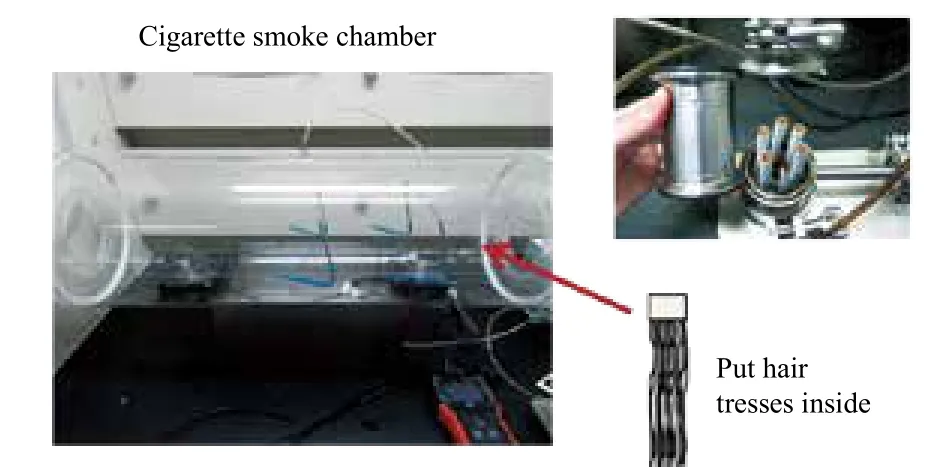
Figure 1. Cigarette Smoke Chamber to simulate a polluted environment
Hair exposure process

Virgin and bleached hair tresses were cleaned with a 5% SLES solution, then sequentially immersed in a graduated cylinder containing methanol, dichloromethane and water for 20 minutes, to remove extra dirt and grease,and finally were hung up to be air-dried. The dry/wet combing, surface contact angle, tryptophan level, and cuticle morphology of the tresses[11]were measured. The tresses were exposed to a smoke chamber for one hour with a smoke concentration of six cigarettes/42L, then cleaned with the same method used in the pre-treatment stage to remove residue, and finally hung up to be airdried. This procedure was repeated for six cycles in total.The control samples were cleaned with the same method used at the pre-treatment stage and this was repeated for six cycles. The parameters were measured again for comparison to the initial data (Figure 2).

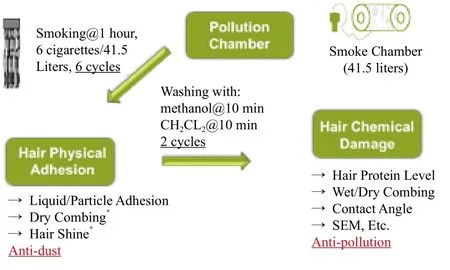
Figure 2. Experimental method for assessing hair pollution
Hair damage evaluation
The dry/wet combing was measured by combing work, which is defined as the work carried out by a comb going through the hair (Instron). The combing work was calculated by averaging the values of six measurements.Surface hydrophobicity was measured by the contact angle of a water droplet on a flat and smooth surface of hair tress. The tryptophan content was measured with a fluorescence spectrophotometer. The normalized tryptophan fluorescence intensity was calculated by taking an average of different sections of a hair strand, where a higher average indicates a higher tryptophan content.The cuticle morphology was observed with a scanning electron microscope at 1,000x magnification.
Statistical analysis
The JMP 10.0.1 software for statistical analysis was used and the relevant charts show data values in the form of “average ± standard deviation”. P < 0.05, P <0.01 and P < 0.001 indicate a statistically significant case, a significant difference and an extremely significant difference, respectively.
Results and discussion
One of the key challenges in discovering the nextgeneration of technologies is the development of models to properly assess anti-pollution efficacy. A new in vitro method has been established which uses cigarette smoke containing all important classes of pollutants e.g. toxic gases, liquids (tar) and PM 2.5/ 10 particles, to simulate air pollution. The hair tresses, following exposure to cigarette smoke, tends to exhibit dryness, rough surface texture, and high wet/dry combing force etc. The wet/dry combing, contact angle, hair protein level (tryptophan)which is one indicator of overall hair protein, were measured and reported as following.
Wet combing
As a major indicator of hair health condition, wet combing shows the friction between the comb teeth and the hair, as well as among hair fibers, which is affected by damage to the hair cuticle and protein.[11]More damage will make hair more hydrophilic, leading to more tangled wet hair and a higher wet combing force. Therefore,undamaged or healthy hair has the lowest wet combing force.[12]As shown in Figure 3, the wet combing work of the control sample after the third and sixth cycles were basically the same as the initial sample after pre-treatment,which indicates that surfactants and solvents do not damage the hair and increase wet combing work. After exposure to smoke, both virgin and bleached hair require significantly higher wet combing work. In particular, the combing work of virgin hair after six cycles was nearly twice the initial value after pre-treatment, which is close to the initial wet combing work of the bleached hair. It can be concluded that air pollution can cause irreversible chemical damage to hair, especially virgin hair.
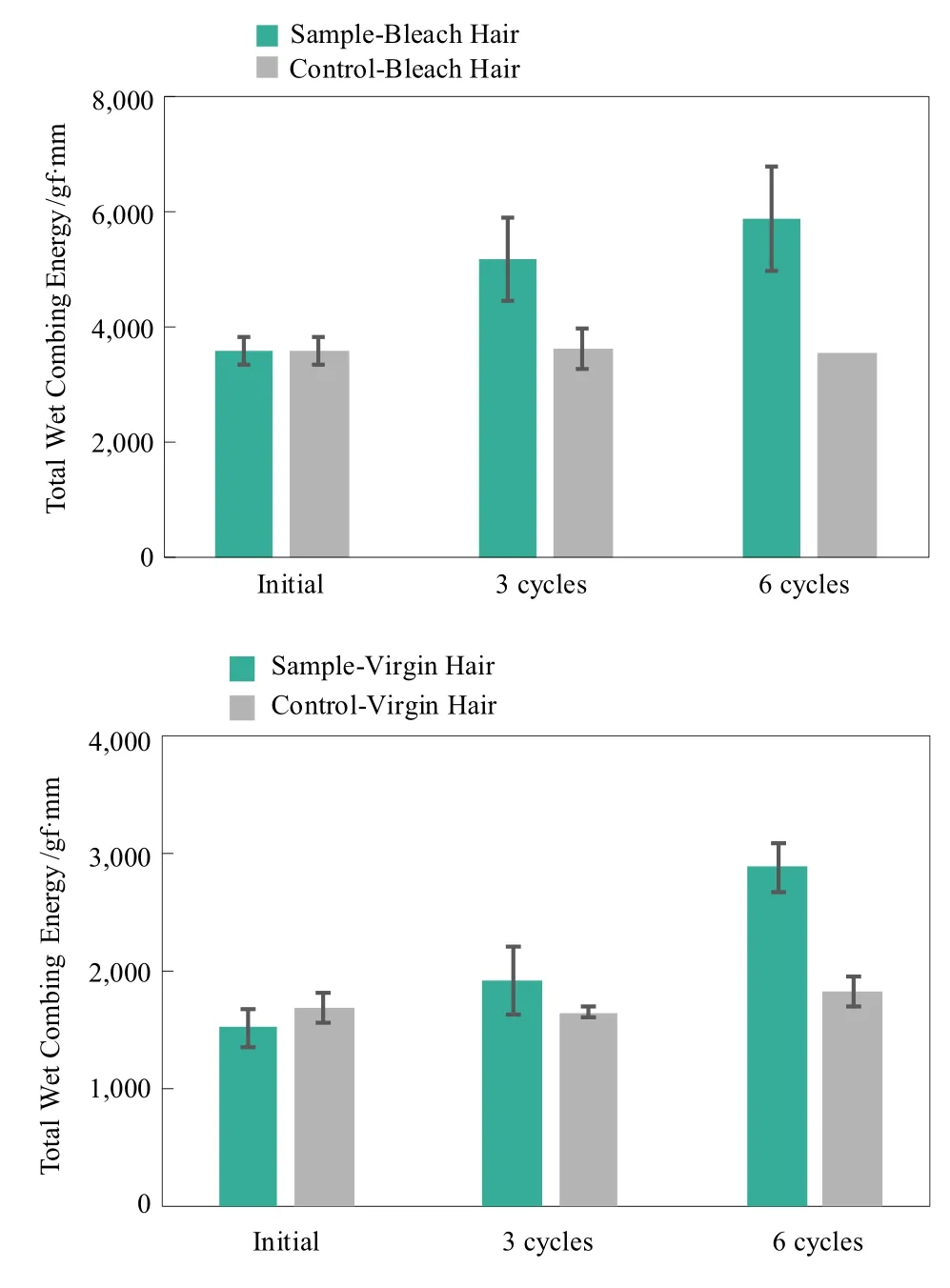
Figure 3. The wet combability of the sample (exposed)and control (unexposed, washed by solvents) groups after pre?treatment, the third and sixth circles treatment
Dry combing
When particulate matter (PM2.5/10) and toxic pollutants are absorbed into the hair surface, the dry combing force will increase,[13]while the absorption of oils, such as tar that commonly are present with PM2.5/10, will decrease the combing force. Hair exposed to cigarette smoke has lower dry combing work than the control sample. Therefore, combing force cannot be used as indicator for hair damage before cleaning by surfactants and solvents. This is why a serial cleaning process was performed to remove the residue caused by the smoke and allow the real hair damage to be evaluated,rather than an anti-dust evaluation. As shown in Figure 4, the dry combing work for the control samples after the third and sixth cycles were basically the same as the initial values, while exposed samples after three cycles showed increases in the initial dry combing work by 40%~50%. The values did not increase after the sixth cycle of smoke exposure, indicating that the hair damage reached the maximum level even after three cycles of smoke exposure. Both hair cuticle and protein damage will have adverse effects on dry combing. In particular,raised cuticles will cause an uneven hair surface, leading to increased friction between the comb and the hairs.[3,12]
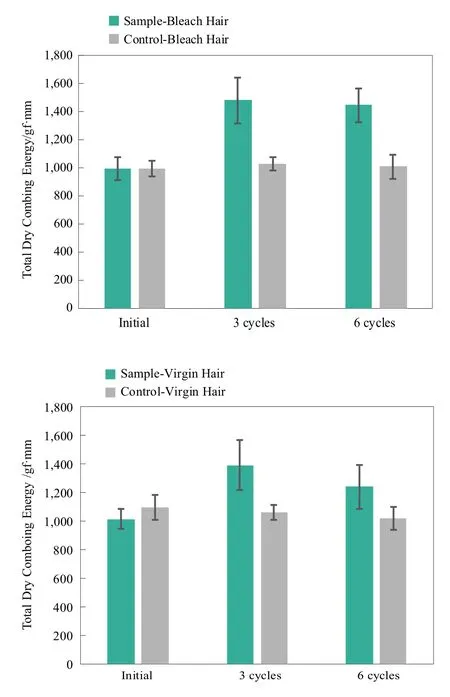
Figure 4. Dry combability of the sample (exposed) and control (unexposed, washed by solvents) groups after pre?treatment, the third and sixth circles treatments
Contact angle
The outermost layer of hair is composed of hydrophobic 18-methyl eicosanoic acid (18-MEA) lipid, which is most vulnerable to external damage. Without the natural protection of 18-MEA, the hair will be more hydrophilic and its cuticle and inner structure will be more easily damaged, due to direct exposure to external factors such as air pollution. 18-MEA is connected to keratin in the same layer through thioester bonds, which can be damaged by alkaline ingredients in air pollution, such as ammoniac compounds, leading to loss of the 18-MEA layer. The contact angle between a water drop and the hair surface can be measured to determine to what extent 18-MEA has been lost.[3,11]Figure 5 shows the hydrophilicity of the exposed and control samples after several cycles of smoke exposure. The contact angles of the bleached hair in both the exposed and control groups were basically the same as the initial contact angle after pre-treatment. According to our analysis, this is because9 most of the 18-MEA was lost due to the hair bleaching process.[12]But the contact angle of the virgin hair gradually decreased throughout the experiment.The contact angle after six exposure cycles was about 85% of the initial contact angle after pre-treatment, close to the initial contact angle of the bleached hair.
Hair protein level
Protein is the key structural component of hair, and can be degraded through exposure to heat, UV, and oxidizing stresses. Hair protein level can be used as an indicator for hair damage level.[7]There are various methods by which to measure protein degradation, such as DSC, FTIR, etc.In this study, a fluorescence spectrophotometer was used to measure the tryptophan level present in the hair, with the excitation wavelength set to 290 nm. Tryptophan is one of the amino acids that can be found in keratin, it has a unique emission wavelength of 335 nm, making it a natural indicator for measuring protein degradation in hair. The more severe the damage is, the lower the presence of tryptophan in the hair.[14]By comparing the tryptophan content before and after hair treatments such as perming,coloring, and straightening, the hair damage from such treatments can be measured. As shown in Table 2, the tryptophan content of the bleached hair in the experimental group did not decrease after several exposures to cigarette smoke. This is because about 50% of the tryptophan had already been lost due to hair bleaching by highly oxidizing and alkaline solutions, so most of the tryptophan in the surface and middle layers of the bleached hair had been degraded already.[14]In contrast, the tryptophan content of the virgin hair after smoke exposure gradually decreased throughout the experiment. The tryptophan content after six exposure cycles was about 90% of the initial tryptophan content after pre-treatment.
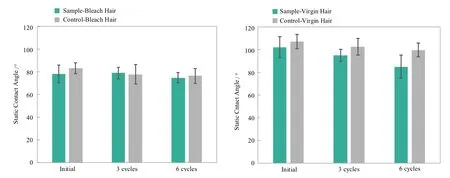
Figure 5. The hydrophilic properties of the sample (exposed) and control (unexposed, washed by solvents) after pre?treatment, the third and sixth treatments

Table 2. Percentage decrease of the tryptophan content of the experimental and control groups after the third and sixth treatments
Cuticle morphology
With the loss of the 18-MEA layer, hair cuticles lose protection, leading to direct exposure to stresses such as air pollutants, which can cause keratin breakdown.The hair cuticles will therefore become raised and shredded instead of smooth and intact, with less hair glossiness, moisture, etc.[7]Figure 6 shows the cuticle morphology of virgin hair after six exposure cycles and in the control group. The cuticles of the polluted hair in the experimental group are severely shredded and raised,while those of the control sample are smooth and intact.This illustrates the severe damage that air pollution exposure can cause to the outermost layer of hair cuticles.
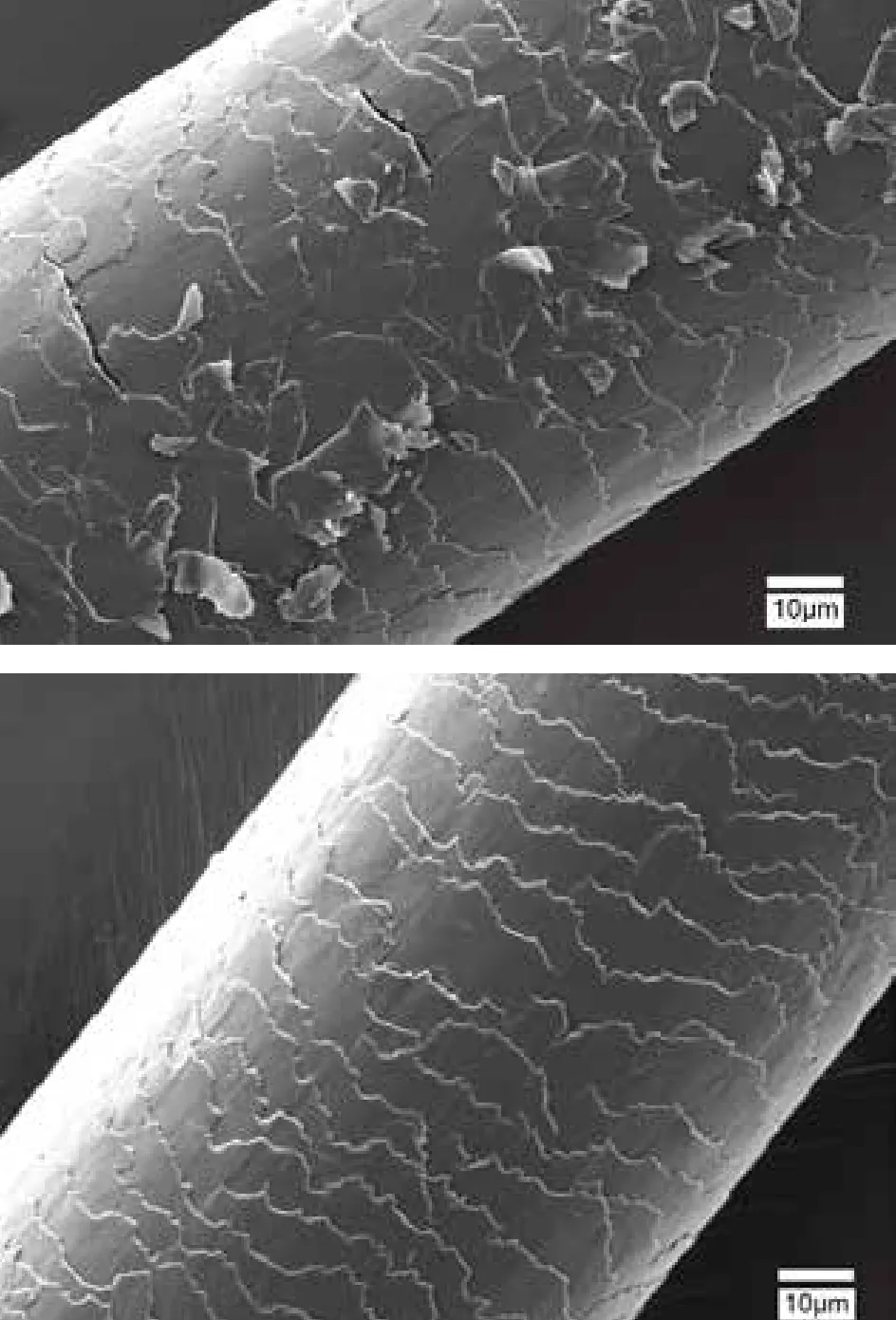
Figure 6. Cuticle morphology of the healthy hair in the sample (left) and control (right) groups after the sixth treatment
Conclusions
This study designed an accelerated experiment on the changes in hair properties, such as combability, contact angle, tryptophan content, and cuticle morphology, in an environment containing a high concentration of airborne pollutants such as PM 2.5/10, as simulated by cigarette smoke in a closed chamber. The air pollutants absorbed into hair not only show temporary physical adhesion,they also cause irreversible chemical damage. Though immediate cleaning can reduce the level of physical damage caused to hair, but the harmful compounds in air pollutants can penetrate inside the hair and accumulate,causing damage to the hair cuticle and protein breakdown.The method used in this study can act as a reference point for further research on how and to what extent hair can be damaged by exposure to air pollution.
[1] Emmanuelle M. Protection-shielding against the impact of pollution, stress and UV. Bangkok: In-Cosmetics Asia, 2014.
[2] Li Shizhong; Liu Huizhen. The aging and anti-aging of hair.Detergents & Cosmetics 2010, 33(12), 24-27.
[3] Takada K, Nakam A, Mastsuo N, et al. Influence of oxidative and/or reductive treatment on human hair [I]: analysis of hair damage after oxidative and/or reductive treatment. Journal of Oleo Science 2003(52), 541-548.
[4] Isabelle A. Method of using fibers as an antipollution agent in a cosmetic composition: US20020031533. 2002-03-14.
[5] Rohde R A; Muller R A. Air pollution in China: mapping of concentrations and sources. PLoS One 2015, 10(8), 1-18.
[6] Blosl N; Ott R; Schacht K. Efficient Hair Protection — the Multi-functional silk polypeptides new and promising strategy against pollution. S? FW Journal 2017(413), 43-45.
[7] Adamson J; Azzopardi D; Errington G; et al. Assessment of an in vitro whole cigarette smoke exposure system: The Borgwaldt RM20S 8-syringe smoking machine. Chemistry Central Journal 2011(5), 50.
[8] Chang X W; Cox1 B; Thomas F?ster T. Study of the dust deposition prevention effect of hair shampoo and conditioner formulations containing moringa oleifera seed extract. Poster presentation at the 23nd IFSCC Conference, September 21-23,2015, Zurich, Switzerland.
[9] Pham D M; Boussouira B; Moyal D; et al. Oxidization of squalene: a human skin lipid: a new and reliable marker of environmental pollution studies. International Journal of Cosmetic Science 2015,37(4),357-365.
[10] Wang B; Hang Ho S S; Ho K F; et al. An environmental chamber study of the characteristics of air pollutants released from environmental tobacco smoke. Aerosol and Air Quality Research 2012,12, 1269-1281.
[11] Ito H; Muraoka Y; H?cker H. Damage of hair fibers as evaluated by an electrical capacitance technique. Journal of the Society of Cosmetic Chemists 1994, 45(4),183-192.
[12] Velasco M V R; Dias T C S; Freitas A Z; et al. Hair fiber characteristics and methods to evaluate hair physical and mechanical properties. Brazilian Journal of Pharmaceutical Sciences 2009, 45(1), 153-164.
[13] S L Virey; R G Rielly; K L Rutherford; et al. Hair treatment compositions containing particulate matter: CN1413102. 2003-04-23.
[14] Jachowicz J; Mcmullen R L. Tryptophan fluorescence in hair—Examination of contributing factors. Journal of Cosmetic Science 2011, 62(3), 291-304.
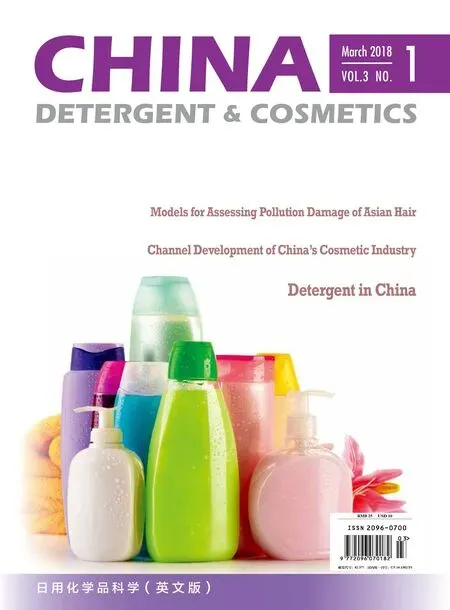 China Detergent & Cosmetics2018年1期
China Detergent & Cosmetics2018年1期
- China Detergent & Cosmetics的其它文章
- Reconstruction of 3D Skin Model and Its Application in Evaluation the Efficacy of Cosmetic Raw Materials and Active Intredients
- An In Vitro Biological Model for Evaluation of the Anti-Dandruff Performance of Hair Care Products
- Technical Approaches and in-vitro Evaluation Methods for Scalp Care
- Regulation of Talcum Powder in Cosmetics at Home and Abroad
- Technical Standard System Construction Plan for Surfactants and Detergents in the“13th Five-year Plan” Period
- A Summary on Chinese Daily Chemical Journals
